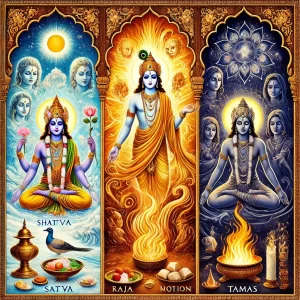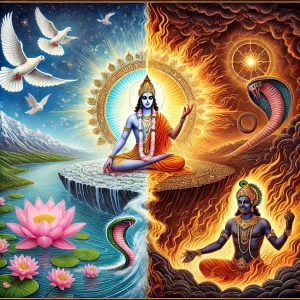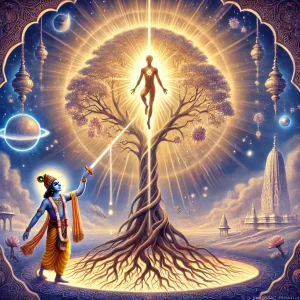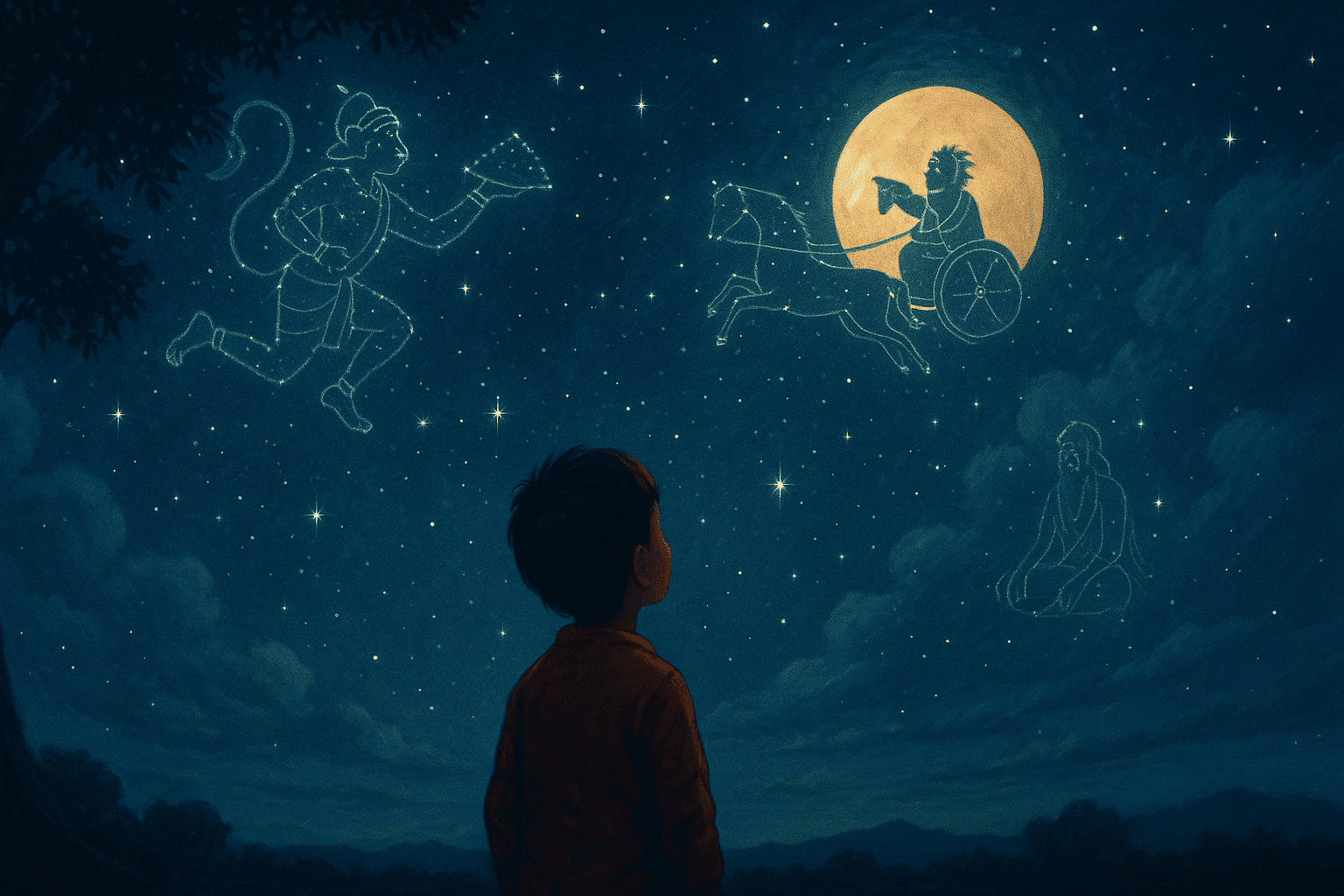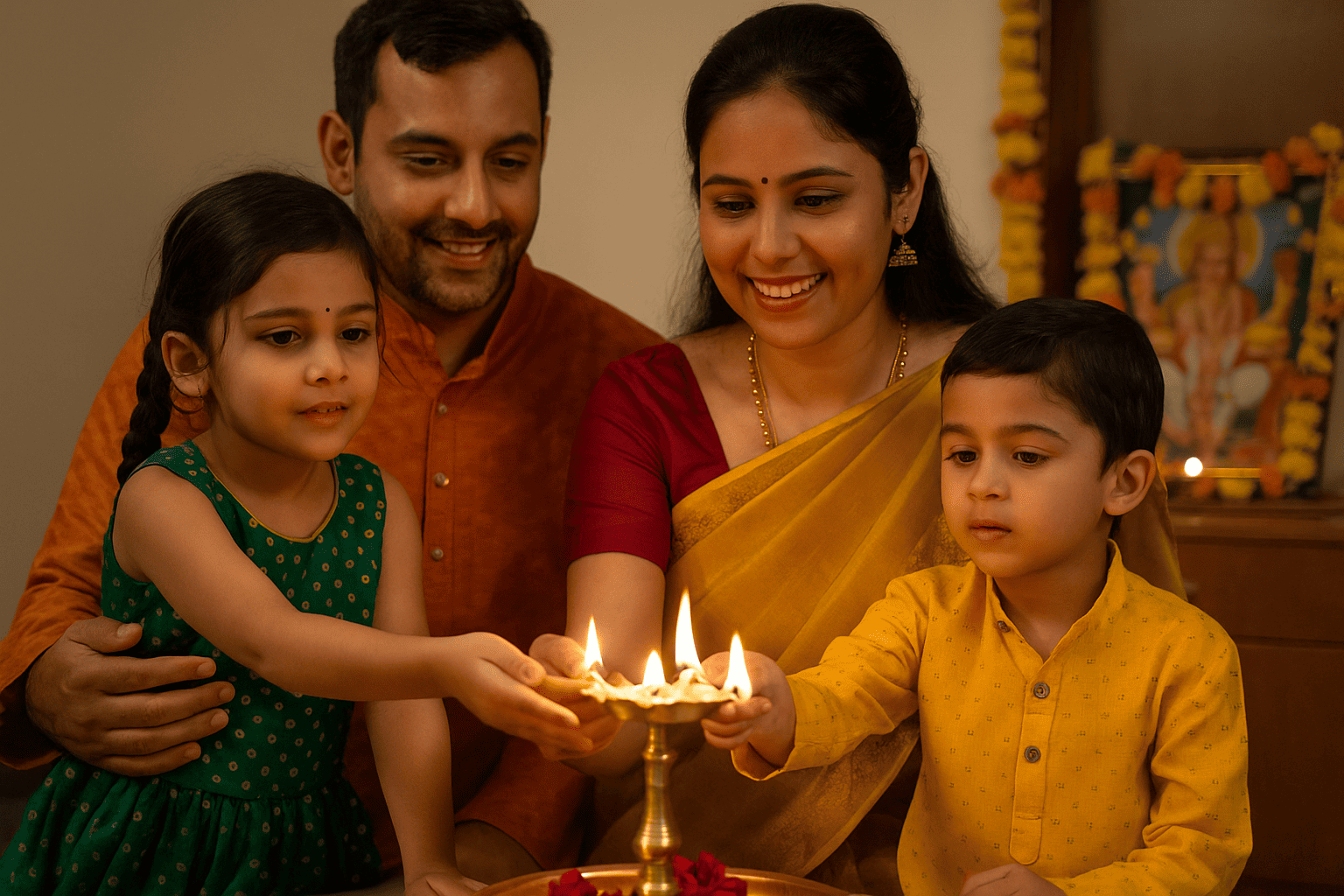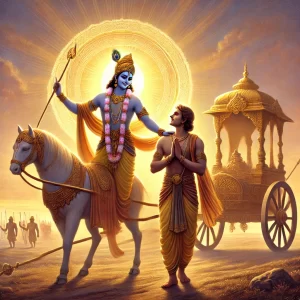
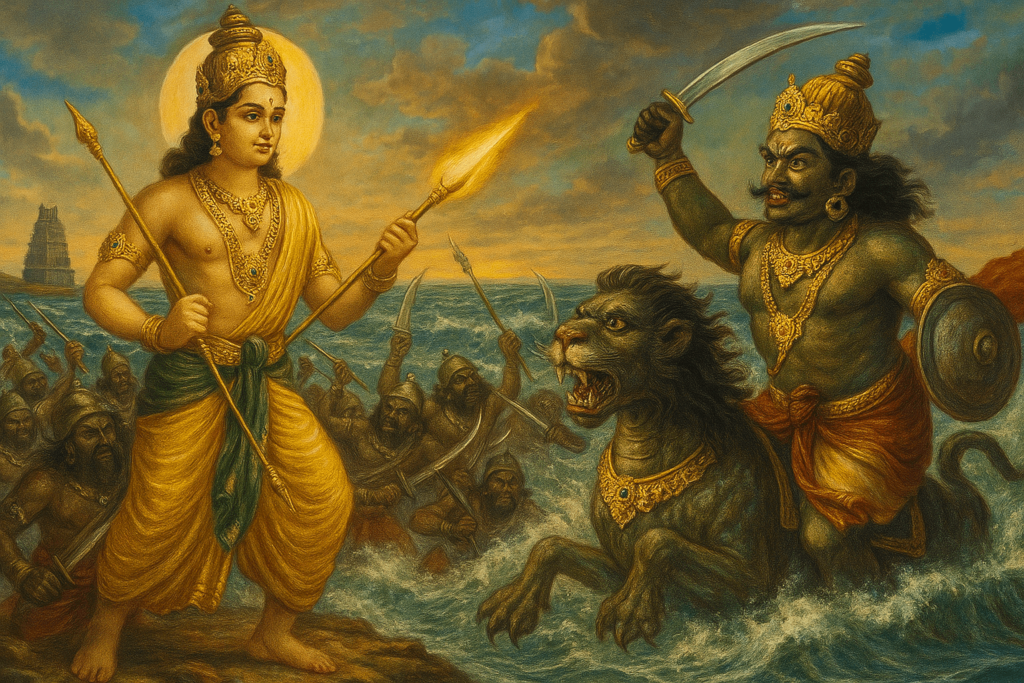
Before the birth of time as we know it, when the heavens still shimmered with divine harmony, there arose a darkness that would test the very balance of the cosmos. That darkness had a name: Surapadman—a mighty asura born of intense penance, granted great boons by the gods, and empowered with near-invincibility. What had begun as devotion slowly twisted into domination.
Surapadman and his brothers, Simhamukha and Tarakasura, built an empire of fear. They desecrated yagnas, imprisoned devas, blocked sacred rivers, and cast a long shadow over dharma itself. Their cruelty was so vast that even the sun seemed to dim.
The devas, helpless and humiliated, fled to Mount Kailash, the abode of Lord Shiva, seeking refuge. There, in silence, they fell at his feet, begging for deliverance.
Moved by their suffering and stirred by the cosmic imbalance, Lord Shiva opened his third eye in divine rage. From this eye burst forth six sparks—pure, radiant, blazing with celestial energy. These were no ordinary flames. They were the seeds of a savior.
The god of fire, Agni, and the wind god, Vayu, carried these six sparks to the sacred Saravana Poigai, a lake hidden deep in a forest of reeds. There, under the watchful gaze of the six Karthigai Pengal (celestial maidens), the sparks took form—each becoming a divine child. These six children were nurtured with love and devotion, and later, embraced and unified by Goddess Parvati into one resplendent being with six faces and twelve arms.
He was named Murugan, also known as Skanda, Kartikeya, and Shanmuga—the warrior of light, the general of the gods, and the destroyer of evil.
As Murugan grew, he displayed unmatched brilliance, strength, and wisdom. Though young in appearance, he carried the maturity of the cosmos itself. When he learned of the suffering caused by Surapadman, he did not hesitate.
He was given the Vel, a divine spear forged from Goddess Parvati’s own shakti. It would become the symbol of piercing truth, the destroyer of ego, and the bringer of justice.
With the divine peacock as his vahana (mount), and an army of devas behind him, Murugan descended to earth. He chose not the mountains or palaces as his base, but a humble shoreline—a quiet, holy beach on the edge of the Indian Ocean.
That place was Thiruchendur.
The waves crashed endlessly against the rocks. The salt wind howled like a warning. And on the sands of Thiruchendur, Murugan pitched his war camp—a Padai Veedu, a battlefield that would become sacred for all eternity.
For six days and six nights, the battle raged.
Murugan faced countless asura soldiers, monstrous beasts conjured from dark magic, and terrible illusions meant to confuse the mind. But his Vel blazed like a comet through the night sky, cutting through fear and falsehood alike. Every step he took on the shore echoed with thunder. Every strike shook the heavens.
On the seventh day, the final confrontation arrived. Surapadman, riding a monstrous lion, cloaked in illusions, emerged with all his fury. He hurled mountains, summoned firestorms, and challenged Murugan with his most fearsome form.
Murugan stood undaunted. The Vel in his hand shimmered with truth.
As Surapadman transformed himself—first into a tree, then into fire, then into a giant bird—Murugan matched every move with clarity and focus. At last, when Surapadman took the form of an enormous mango tree, Murugan hurled his Vel, splitting the tree in two.
But Murugan, though fierce in battle, was not driven by hatred.
From the two halves of the tree, he transformed the demon into symbols of surrender and grace: one part became a peacock, which would become his mount, and the other a rooster, which adorned his war flag. In this act, Murugan showed the world that even the fallen could find redemption.
Thus, Surapadman, once the terror of the cosmos, found peace—not through annihilation, but through transformation.
With the demon king defeated and dharma restored, the skies cleared. The devas sang hymns. Flowers rained from above. The ocean, once restless, now shimmered in silent reverence.
Murugan did not boast, nor seek celebration. He stood humbly by the sea, washed his Vel in the waves, and offered his gratitude to the Divine for guiding him through.
To this day, the Thiruchendur Murugan Temple stands on that very shore. It is the only one of the six abodes located by the sea. Pilgrims arrive to hear the roar of the waves and remember the roar of righteousness. They bathe in the ocean, as Murugan once did, and climb the steps not to a warlord’s fortress, but to the sanctum of a compassionate god.
The story of Thiruchendur is not only about a battle between gods and demons. It is about the inner war—between truth and illusion, pride and humility, ignorance and wisdom. It teaches that true power lies not in destroying others, but in overcoming oneself.
At Thiruchendur, Lord Murugan stands not just as a victorious warrior, but as a beacon of grace, justice, and fearless love.

